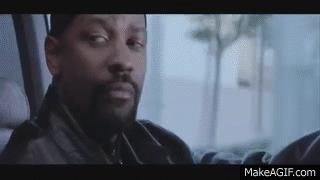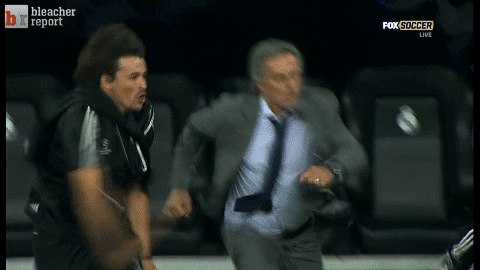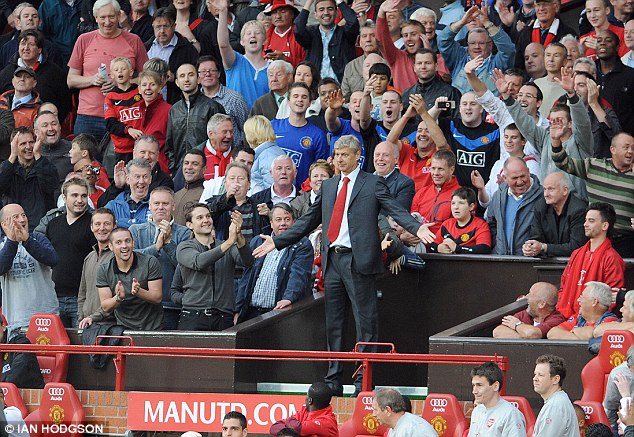- 26,308
- 29,419
- Joined
- Nov 3, 2011
Chill with the stream talk.
Follow along with the video below to see how to install our site as a web app on your home screen.

Note: this_feature_currently_requires_accessing_site_using_safari

I've never heard the term grooming before, didnt know it was this hefty. Not a good look for this dude at all, his career is likely overLooks like itDamn Adam Johnson gets down like that?

For those who are unfamiliar with "grooming" (I had to look it up)
Grooming is befriending and establishing an emotional connection with a child, and sometimes the family, to lower the child's inhibitions for child sexual abuse. It lures minors into trafficking of children, illicit businesses such as child prostitution, or the production of child pornography.
Ayi yi yi, it doesn't look good at all
Blunderland will most likely release a statement soon, and terminate his contract with immediate effect. Last time he'll ever kick a ball professionally...
Gary knows his time is up, his team did nothing against a team of Barca's reservesgood to know fellas, always in situations where i gotta stream the CL matches during class lol. lol at gary furiously screaming a his players the entire time
I've seen live Ligue 1 on Fridays.spanish games (cup or league) always take priority for them over ligue 1 and usually italian matches also unless its juve which sometimes they get the live nod over la liga/copa del rey. but yeah french matches are on delay on bein 99% of the time.
muller just had a penalty blocked against bochum
@the_manutd_blog: Personal terms are also agreed with Mourinho, who is keen to bring in Atletico Madrid's sporting director Andrea Berta. Berta's arrival at Old Trafford would see the job of signing players moved from executive vice-chairman Ed Woodward to him. Mourinho is keen to have the freedom to overhaul the squad and has already spelled out his potential summer targets to the club. It would relieve Woodward of responsibility for securing the signatures of transfer targets and free him up to concentrate on the commercial side of United's operations. (Mirror)
@the_manutd_blog: Jose Mourinho will begin a ruthless purge of the @ManUtd United squad by selling £37m Mata and £27m Fellaini if given the job.
The former Chelsea manager has told executive vice-chairman Ed Woodward to sell the midfield pair. Mourinho outlined his intentions for the first team squad during a meeting with Woodward.
(Daily Mail)


"i run **** here, you just live here"Considering Mou's track record with going to a club and winning trophies, I would sell whoever he suggests
U.S. Soccer overhauls its coaching license standards
As 2016 shapes up to be a pivotal year in player and coaching development in the United States, Planet Fútbol dives into just what American clubs and the federation are doing in their quest to evolve as a soccer nation. This is the third of a three-part series on the subject.
U.S. Soccer announced a series of overhauls in coaching education and the structure of the youth game in 2015, which will begin to take root in 2016. The significant changes in licensing courses and new youth initiatives take from successful models around the world and, officials say, will eventually allow a uniquely American system that pulls the United States forward.
“None of it is about copying what happens in other countries,” Ryan Mooney, who oversaw the changes as U.S. Soccer director of sport development, told SI.com. “It’s really about bringing in different perspectives, bringing in international expertise, people that have proven track records of developing coaches, educating coaches in a very professional manner and at a very high level and creating something that is uniquely American.”
One of those people, Nico Romeijn, took over as director of coaching education in June 2015. He joined U.S. Soccer from the Royal Dutch Football Association, where he held the same position for 14 years, along with supporting UEFA in multiple coaching education endeavors. He was responsible for the content of every KNVB license and wrote various publications for UEFA, focusing on the UEFA B, A and Pro levels, and he also visited several nations to support them in their educational efforts.
Along with Romeijn, U.S. Soccer hired new coaches for the oldest youth national teams on the boys side at the end of 2015. Jack Hackworth took over as the Under-17 coach for the second time, while former Iran assistant coach Omid Namazi took over the U-18s and legendary U.S. goalkeeper Brad Friedel now coaches the U-19s.
However, the biggest recent change in American coaching will likely prove to be the new format to U.S. Soccer’s major licensing courses, the C, B and A, as well as the addition of a Pro course.
The changes should increase the meaning of each license by ensuring they are accessible only to the right level of coach; in other words, the courses should be harder to pass.
“We’re not going to have better players until we have better coaches,” Mooney said. “Every time I say ‘player development,’ I really mean developing the coaches that work with those players. … I think sometimes, we don’t articulate it well enough so that people really understand that those two things, in many ways, are one and the same.”
Through 2015, the C, B and A courses were held over a nine-day period that included seven days of instruction followed by two days of testing. Starting in 2016, those courses will consist of multiple, shorter meetings with assignments to be completed in between meetings in the candidate’s home environment.
The C License course will have two in-person meetings, as the D course already does, while the B License will require three meetings over four months and the A License, four meetings over six months. The Academy Director and Pro licenses can be taken by invitation only for now, though officials want to transition to an application-based acceptance in the future.
“I think there is this solid basis when you’re looking at the things we’re doing in this nine-day period, but it’s almost impossible to change behavior,” Romeijn said. “It’s the same with your players: they won’t change their soccer behavior in nine days of training … so we mustn’t think we can change the behavior of coaches in nine days.”
Each course also has a refined focus now in terms of target age groups, leading to better accessibility for the right coaches. For the U-6 to U-8 ages, an F License is appropriate, while the E License covers U-9 to U-12. The D License covers U-13 and U-14, while the C course is aimed at coaches of U-15 to U-18. The B License covers the same ages as the C but is aimed at the elite level of player, while coaches working with U-19 players and older should aim for an A License.
“It’s easy to get caught up in [license levels] … but the reality is that there are a lot of people that need an F, that need an E and need a D because that’s where the majority of players [are] of the over 4,000,000 youth players that we have,” Mooney said. “At the same time, it would be great to have better educated coaches working with players at younger ages, so there’s a balance there.”
One of Romeijn’s big assignments so far with U.S. Soccer has been to develop the new Pro course, the pilot program for which kicked off in December 2015 with 13 current MLS managers and U.S. youth national team coaches as the initial group of candidates.
“We didn’t have this license really aimed to the professional environment, so there was this need to make this full pathway from grassroots—F License—to the pro environment,” Romeijn said. “We’ve got two goals when we’re looking at the pilot. One of them is, of course, looking at the needs of the candidates and to give them what they need to improve their level. The other thing is to set standards for the next generation.”
The course will progress over a year-long period and include in-person instruction, guest speakers, small-group meetings, webinars and club visits.
In the first meeting in December 2015 in Orlando, former Everton and Manchester United manager David Moyes, Seattle Sounders head coach Sigi Schmid, Harvard business professor Gautam Mukunda and author of The Talent Code, Daniel Coyle, all spoke.
The changes to be implemented this year are the culmination of five years of overhaul in coaching education, which started in 2012 and 2013 with tweaks to the E and D courses. An Academy Director course started in 2014, while the new F License came online (literally, as it’s a web-based course) in 2015.
“There’s a real balance going on here, that we want to create more accessibility for everybody at the right standard of the level that the coach is actually working with players,” Mooney said. “A lot of that ties into the reality-based learning environment that we think is really important at all levels.”
Along with implementing the changes to the license pathway, U.S. Soccer is looking into how it can better provide continuing education experiences for its coaches. Currently, every coach holding an A License has to complete a certain number of continuing education credits every four years to maintain their status, though exceptions are granted to head coaches of professional teams and national staff.
“It’s now about finding ways to keep coaches getting better in a continuing education program, whether that’s executed locally, whether it’s something that happens at the national level, because that’s really what helps make coaches get better on an everyday basis,” Mooney said. “There’s a much longer [licensing] experience over months of time, in some instances, but that’s still a relatively short window in the career of a coach. It can take years and years, and it maybe should, to develop some of these qualities and get them to their fullest capacities.”
Romeijn said coaches should be expected to take some ownership of their own development outside of their coaching courses as well. Any license in itself means little when it’s not coupled with a willingness to continually learn.
“One of the goals is preparing the coach for his tasks by knowledge and how to apply it—skills you know—but the other thing is learning attitude,” Romeijn said. “You have to take ownership of your own development, and we will facilitate … but it starts with you—with your attitude.”
The content of the courses has also been changed to ensure implementation of what U.S. Soccer touts as a reality-based training environment. The focus is on small-sided games, and every exercise should relate to the game that players will have to navigate on the weekend.
The approved U.S. Soccer training session plan progresses through four stages: the warm-up, a small-sided activity, an expanded activity and a final game. Every session is required to have a tactical focus on at least one line of players, whether it’s the defense, midfield or forwards.
The warm-up must be appropriate for the rest of training and the game in general, and the small-sided game has to introduce an element of pressure and a direction of play (to goal, for instance). The expanded activity must be played in the appropriate section of the field, introduce at least one full-size goal and the appropriate Laws of the Game, such as offside. Finally, the game at the end ties everything together and allows players to play in a less restricted structure.
This approach ensures that players are exposed to both technical and tactical elements of the game, because both are vital to creating well-rounded players.
“The player with the perfect technique is not always a good soccer player,” Romeijn said. “A player who is perfect in making decisions, reading the game, analyzing situations, with a good technique, will be this top player. So when you’re looking at small-sided games, the reason we are doing that, and I would say from a global perspective, is that all of the characteristics of the real game are there. … It’s very logical because when you want to prepare the players to play the game, also the exercises should be linked to that.”
Other changes in the U.S. youth soccer structure—including expectations that leagues will play 4-on-4 through U-8, then 7-on-7 through U-10 and 9-on-9 through U-12 before the standard 11-on-11 in U-13 and above, on appropriate-sized fields—are also aimed at expanding the reality-based training environment. These changes should develop better skills on the ball and higher game intelligence by allowing younger players the opportunity for many more touches on the ball in a game.
“Experience is your starting point when you’re looking at learning, so when your experience by playing the game is that you’ve got two touches in, for example, 40 minutes, that doesn’t help you,” Romeijn said. “One of the most important things when you’re looking at learning is repetition, so of course, that’s the reason that we are playing these small-sided games.”
Other rules at the younger ages should also aid in player development, such as “build-out lines” in the 7-on-7 ages to encourage playing the ball out of the back. When the goalkeeper has the ball, opponents must retreat behind a line drawn across the width of the field 14 yards out from goal. Without punting the ball, the goalkeeper will distribute to a teammate who is under no pressure, and then play resumes as normal.
Finally, players will also be placed into teams at all ages based on their birth year rather than the mixed-age groups that currently exist, so all players born in 2000 will play together, for example. The change allows for less confusion in the creation of teams and aligns U.S. Soccer with global standards.
These rule changes will be implemented over the next two years and made mandatory by August 2017, which should allow enough time to create enough fields of the appropriate sizes and deal with the administrative issues of moving players to different teams.
Moving forward, the goal is that U.S. Soccer’s youth development initiatives provide a framework for better alignment with global standards. Through better coaching education, the U.S. can strive to develop better players at all levels of the game, which should positively impact the senior national teams.
With more uniform standards, the U.S. can cope somewhat with its massive geographical size in an attempt to create a coherent national identity. Throughout past generations, national teams have struggled to implement a sustainable team identity, oscillating as often as the player pool turned over and new coaches took over.
Through its partnerships with Belgian company Double PASS and the French federation, a largely German national team staff on the men’s side and now hiring Romeijn, a Dutchman, to head the country’s coaching education efforts, the U.S. has a mix of different foreign influences leading its development efforts.
So what will the U.S.’s footballing identity, which officials hope will lead the nation to compete with the best in the world on a consistent basis, look like?
“I think we’re working on it,” Romeijn said.
anybody else watching the Mexico v Senegal friendly?
"i run **** here, you just live here"Considering Mou's track record with going to a club and winning trophies, I would sell whoever he suggests




Haha such a legend.... Hope he makes his return to the BPL for next season... Hopefully Wenger is out so he can't continue his dominance over Arsene, it's sad at this point




 ,its never a bad time to post that other iconic pic in the Gooners Reds rivalry though...
,its never a bad time to post that other iconic pic in the Gooners Reds rivalry though...
laurent blanc signs extension through 2018 with PSG


